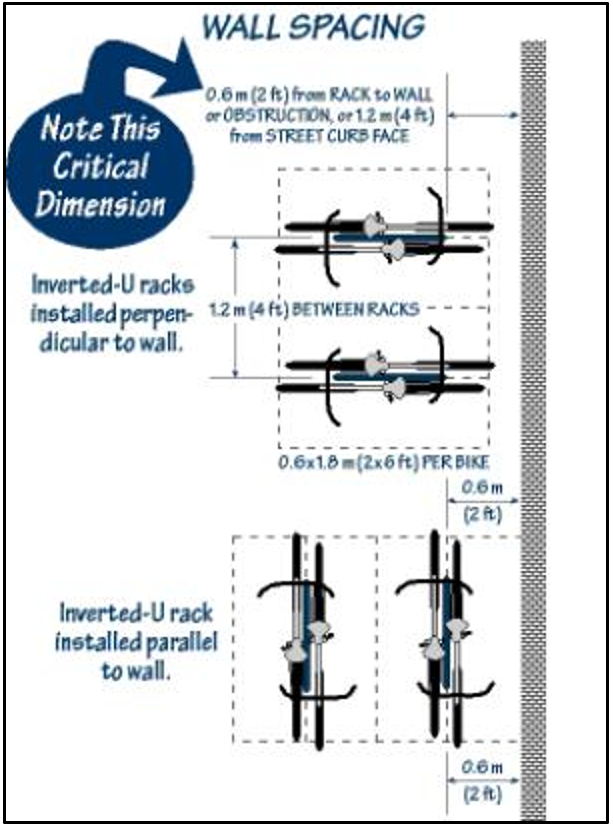19.34.030 Bicycle access and parking.
A. When Bicycle Parking Is Required.
1. Nonresidential Developments. Bicycle parking shall be provided in any development required to provide six or more off-street parking spaces. Determining if bicycle parking will be required based on off-street parking requirements shall be calculated prior to consideration of the exceptions or reductions to off-street parking allowed in EMC 19.34.050 or 19.34.060.
2. Multifamily Developments. Bicycle parking shall be provided in any multifamily development with four dwelling units or more.
B. Number of Bicycle Parking Spaces Required.
1. Nonresidential Developments. At least one bicycle parking space shall be provided for every twelve off-street parking spaces, up to a maximum of twenty bicycle spaces.
|
How to calculate bicycle parking requirements: |
|
A 40,000-square-foot office building in downtown would not be required to provide off-street parking. However, prior to the exception for off-street parking in Parking Area A of Metro Everett (see Map 34-1), the development would have required 100 off-street parking spaces. This project would require eight bicycle parking spaces. |
|
40,000 square feet / 400 sq. ft. per parking space = 100 off-street parking spaces |
2. Multifamily Developments. Four covered bicycle parking spaces shall be provided for every ten multifamily units, with the exception of senior housing, which shall be provided at the rate of one space for every four units. If individual garages are provided, the number of units requiring bicycle parking may be reduced correspondingly.
Figure 1: Bicycle Parking Example (Source: Bend, OR Code)

C. Bicycle Parking Space Location and Design.
1. Nonresidential Development. Bicycle facilities for nonresidential development shall include both short-term and long-term facilities.
a. Short-term facilities are intended for patrons parked less than four hours. Weather protection is not required for short-term facilities.
b. Long-term facilities are intended for employees and occupants of the nonresidential building. At least fifty percent of the required bicycle spaces shall be long-term facilities. These facilities shall be weather protected and conveniently located for the bicyclist in common areas. It is not necessary for all on-site bicycle spaces to be grouped in one central location.
2. Residential Development. Bicycle facilities for residential development shall be weather protected and conveniently located for the bicyclist in common areas. It is not necessary for all on-site bicycle spaces to be grouped in one central location.
3. All bicycle parking shall be located in locations that do not impede pedestrian or vehicle traffic flow, and shall be well lit for nighttime use.
4. All bicycle parking facilities shall be designed to allow a bicycle frame to be locked to a structure (e.g., bike rack) which is securely anchored to the ground, or within a lockable storage area.
5. The planning director or city engineer may promulgate rules for the design and location of bicycle facilities required for development. (Ord. 3616-18 § 2 (Exh. 1), 2018.)